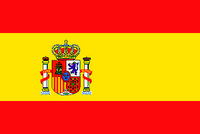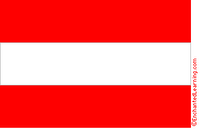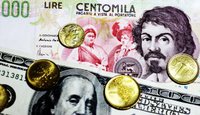Trade 101 and My Own Life Experience

I am writing this in lue of the response I have gotten from many people. It seems to me, as if people just do not understand what Trade Finance is. It is so astonishing, how people can own businesses for years, and not know how to properly run them, or allow them to grow. It is abominable.
I would like to begin with discussing where I fit in here. I come from a long line of International Bankers. My family has been in the International Banking arena since long before World War I and my brother a successful stock broker.
Back in the late 1700's, my family, The Dukes of the Medina Family in Spain, would handle all of the Trade for the Royal family. They would expidie the Trade and very early banking throughout Europe. Of course, things were very different back then, but nonetheless, it is how our world as we know it today grew. I can go much further back, but the premis of the story is my background.
More recently, prior to World War I, my family in Austria, The Kauderer Family, owned and operated the largest Transportation Service for Import and Export from Austria to the Black Forest. Sad to say, the world changed during the War and so did what our families did. Trade and money turned into food and survival. Post War, my family scattered throughout Europe and rebuilt. Years went by and as the new generation grew, they took positions as International Bankers in Zurich, South America, Israel, and The Untied States. Soon, Trade began to increase and the world seemed to go back to normal. My uncle became the President of the Bank of Milan, my cousins were the leading Trade Financier's in Turkey
People need to know how important Trade is and how its Financing will allow the ever growing market to Explode!!!
Trade Finance in its self is a specific topic within the financial services industry. It's much different, for example, than commercial lending, mortgage lending or insurance. A product is sold and shipped overseas, therefore, it takes longer to get paid. Extra time and energy is required to make sure that buyers are reliable and creditworthy. In addition, foreign buyers - just like domestic buyers - prefer to delay payment until they receive and resell the goods. Due diligence and careful financial management can mean the difference between profit and loss on each transaction.
This tutorial is intended as an introduction to the different types of trade finance.
Introduction
All sellers want to get paid as quickly as possible, while buyers usually prefer to delay payment, at least until they have received and resold the goods. This is true in domestic as well as international markets.
Increasing globalization has created intense competition for export markets. Importers and exporters are looking for any competitive advantage that would help them to increase their sales. Flexible payment terms has become a fundamental part of any sales package.Selling on open account, which may be best from a marketing and sales standpoint, places all of the risk with the seller. In essence, the seller ships and turns over title of the product on a promise to pay from the buyer.Cash-in-advance terms place all of the risk with the buyer as they send payment on a promise that the product will be shipped on time and it will work as advertised. Cash-in-advance often places the seller at a competitive disadvantage. Today, open account terms with extended dating are becoming more common despite the dangers.Trade finance provides alternative solutions that balance risk and payment. In this overview, we'll outline the two broad categories of trade finance:Pre-shipment financing to produce or purchase the material and labor necessary to fulfill the sales order; orPost-shipment financing in order to generate immediate cash while offering payment terms to buyers.
General Considerations
The following factors and consideratins apply to financing in general.Financing can make the saleIn some cases, favorable payment terms make a product more competitive. If the competition offers better terms and has a similar product, a sale can be lost.In other cases, the exporter may need financing to produce the goods or to finance other aspects of a sale, such as promotion and selling costs, engineering modifications, and shipping costs. Various financing sources are available to exporters, depending on the specifics of the transaction and the exporter's overall financing needs.
Financing Costs
The costs of borrowing, including interest rates, insurance and fees will vary. The total cost and its effect on the price of the product and profit from the transaction should be well understood before a pro forma invoice is submitted to the buyer.
Financing Terms
Costs increase with the length of terms. Different methods of financing are available for short, medium, and long terms. Exporters need to be fully aware of financing limitations so that they secure the right solution with the most favorable terms for seller and buyer.
Risk Management
The greater the risks associated with the transaction, the greater the cost. The creditworthiness of the buyer directly affects the probability of payment to an exporter, but it is not the only factor of concern to a potential lender. The political and economic stability of the buyer's country are taken into consideration.
Lenders are generally concerned with two questions:Can the exporter perform? They want to know that the exporter can produce and ship the product on time, and that the product will be accepted by the buyer.Can the buyer pay? They want to know that the buyer is reliable with a good credit history. They will evaluate any commercial or political risk.If a lender is uncertain about the exporter's ability to perform, or if additional credit capacity is needed, government guarantee programs are availalbe that may enable the lender to provide additional financing.
Export Intermediaries
Many times, small business owners may not have the time or resources to pursue international sales. If there is a demand for the company's product, use of export intermediaries may prove beneficial.Export Trading Companies (ETCs) and Export Management Companies (EMCs) can help with international sales and marketing efforts. IN some instances, EMCs can help finance export sales. Some of these companies may provide short-term financing or may simply purchase the goods to be exported directly from the manufacturer. This eliminates any risks associated with the export transaction as well as the need for financing.
Types of Trade Finance
Trade Finance, Working Capital Loans and Foreign Buyer Financing
Trade finance generally refers to the financing of individual transactions or a series of revolving transactions. In addition, trade finance loans are often self-liquidating—that is, the lending bank stipulates that all sales proceeds are to be collected, and then applied to payoff the loan. The remainder is credited to the exporter's account.The self-liquidating feature of trade finance is critical to many small, undercapitalized businesses. Lenders who may otherwise have reached their lending limits for such businesses may nevertheless finance individual export sales, if the lenders are assured that the loan proceeds will be used solely for pre-export production; and any export sale proceeds will first be collected by them before the balance is passed on to the exporter.Given the extent of control lenders can exercise over such transactions and the existence of guaranteed payment mechanisms unique to or established for international trade, trade finance can be less risky for lenders than general working capital loans.
Working Capital Loans
For exporters, working capital loan programs are normally associated with pre-shipment financing. Many small businesses need pre-export financing to cover the operating costs related to a sales order or contract. Loan proceeds are commonly used to finance three different areas:Labor: The people needed to build or buy the export product.Materials: The raw materials needed to produce the export product.Inventory: The costs associated with buying the export product.
Term Financing for Foreign Buyers
Frequently, foreign buyers don't have the cash on hand to pay for major purchases. So the buyers ask for extended credit terms and/or financing. Few exporters can manage the cash flow dilemma or commercial and political risks caused by these long-term contracts.Buyer Credit Programs are often an effective solution that benefits the exporter, their buyer and commercial lenders providing the loans. Programs typically provide loan guarantees to commercial lenders. These kind of programs benefit all the parties involved. The exporter benefits because they’re paid cash on delivery and acceptance of the product or service. The foreign buyer benefits because they get extended credit terms at markets rates or better. And the lender benefits because guarantees, many backed by the U.S. Government, mean full repayment of the loan and a reasonable return on funds loaned.
Trade Finance Products
Factoring
Once a product has been shipped, that inventory is converted to an Account Receivable (A/R). A list of all Accounts Receivable are maintained on an aging report while the exporter waits for final payment. If there is a need for immediate cash, it's possible to sell the A/R at a discount. This solution is called Factoring.Factoring is the discounting of foreign accounts receivable that do not involve drafts as the method of payment. A Factor (an organization that specializes in the financing of accounts receivable) takes title for immediate cash at a discount from the face value. Although factoring is often done without recourse to the exporter, verify these specific arrangements.Factors typically provide 70% of the face value with 3-5 working days, and assume responsibility for collection from the buyer. After final payment, the Factor will pay the remaining 30% - less a service fee of 4% - 5%.
Purchase Order Financing
A Purchase Order (P.O.) is a legal agreement signed by a buyer requesting a seller to provide goods or services. Purchase Orders normally list the amount of goods or services required and the terms and conditions of delivery and payment.Major domestic buyers will normally issue a P.O. with Net 30 to 60 day terms. Overseas suppliers will usually ask for OD or sight draft Letter of Credit terms. For an importer, this difference in terms of sale means that there won’t be any cash coming in during the manufacturing process or the transit period. Unless a bank or factor will finance the A/R period, the importer is out of cash until the invoices are finally paid off.Purchase Order Financing can be an alternative solution to this cash flow dilemma. P.O. Financing is a short-term funding technique used to finance the purchase or manufacture of goods that have been presold to a creditworthy customer. Lenders that offer this specialized form of financing will assist in the purchase of product inventory by using the inventory and confirmed purchase orders as collateral. Importers, Exporters, Distributors or Manufacturers can use Purchase Order Financing. Funds are used for issuing Letters of Credit, payment to suppliers for finished goods, raw materials or direct labor. Purchase Order Funding is a risky form of financing and therefore costs more than traditional financing. It requires extensive due diligence, and lenders are highly selective. If you can meet the prerequisites there are some excellent P.O. lenders available to offer you a financial solution.
Sources of Export Financing
Commercial Banks
Large multinational banks are generally thought to be the most experienced in trade finance. Frequently these services are reserved for their major clients and maintain transaction minimums of $1M or more. These banks are less interested in working with small businesses because of smaller deal size and volumes accompanied by greater risk. In fact, small importers and exporters often present a business profile that creates obstacles to financing. Even SMEs with large trade deals are not attractive to larger banks due to risk and credit issues such as loan concentration, debt-earnings ratio restrictions or insufficient collateral.It is important to select a lender that is sincerely interested in serving businesses of similar type or size. If your bank lacks an international department, it may refer you to a correspondent or partner bank. There are non-banks lenders and service providers that specialize in trade finance.
Due Diligence
As part of your due diligence when selecting a bank and a financial solution, ask the following questions:What are the charges for confirming a letter of credit, processing drafts, and collecting payments?Does the bank have foreign branches or correspondent banks? Where are they located?Can the bank provide buyer credit reports? At what cost?Does the bank have experience with U.S. and state government financing programs that support small business export transactions? If not, is it willing to consider participating in these programs?What other services, such as trade leads, can the bank provide?Application InformationBanks and non-bank lenders will require business information as part of their due diligence. This information is packaged with with a loan application and submitted to the lender. The typical information required may include some or all of the following:
- Year end financial statements for the last three years on the business and signed tax returns.
- Current interim financials, normally not older than 90 days.
- Current A/R and A/P agings and inventory details
- Personal Financial Statements on all owners of 20% or more and each of their last three years tax returns (signed).
- Product literature/Business Plan or narrative on how business is operated, number of products produced and sold (proof of ability to perform).
- Resumes on key management.
- Financial projections (P&L) and Cash Flow statement
- Proof of 50% US Content in product exported.
- Purchase Order copies from exporter from foreign buyers (basis for loan/line advances).
- Information on Foreign Buyers (ability to pay)
Assistance from the Federal Government
Several federal and local government agencies offer programs to assist exporters with their financing needs. Some are guarantee programs that require the participation of an approved lender, while others provide loans or grants to the exporter or a foreign government.Government programs generally are aimed at improving an exporter's access to credit. They are not intended to subsidize the cost of credit at below-market levels. With few exceptions, banks are allowed to charge market interest rates and fees; a portion of those fees are paid to the government agency to cover the agencies' administrative costs and default risks.Government guarantee and insurance programs are used by commercial banks to reduce the risk associated with loans to exporters. Lenders who are concerned with an exporter's ability to perform under the terms of sale, and with an exporter's ability to be paid, often use government programs to reduce the risks that would otherwise prevent them from providing financing.
Export Import Bank of the United States (EXIM Bank)
EXIM Bank is an independent federal government agency responsible for assisting export financing of U.S. goods and services. It offers a variety of information services, insurance, loan, and guarantee programs.Ex-Im Bank operates an export financing hotline that provides information on the availability and use of export credit insurance, guarantees, direct and intermediary loans extended to finance the sale of U.S. goods and service abroad.Briefing programs are offered by Ex-Im Bank to the small business community. These programs includes regular seminars, group briefings, and individual discussions held both within the Bank and around the country.
U.S. Department of Agriculture (USDA)
The Foreign Agricultural Service (FAS) of USDA administers several programs to help make U.S. agricultural exporters competitive in international markets and make U.S. products affordable to countries that have greater need than they have ability to pay.These programs are designed to make it easier for commodity exporters to obtain bank financing by providing repayment guarantees to the lenders.The USDA's Commodity Credit Corporation (CCC) operates Export Credit Guarantee Programs to provide United States agricultural exporters or financial institutions a guarantee that they will be repaid for short- and intermediate-term commercial export financing to foreign buyers. These programs protect against commercial or noncommercial risk if the importer's bank fails to make payment. Under one program, the CCC will guarantee credit terms of up to 3 years and under another, credit terms from 3 to 10 years are guaranteed.
You need the proper knowledge in this ever growing world!!!
Know where to go, the when and the how. Don't hesitate to spend time researching and never settle. Look for the best!







